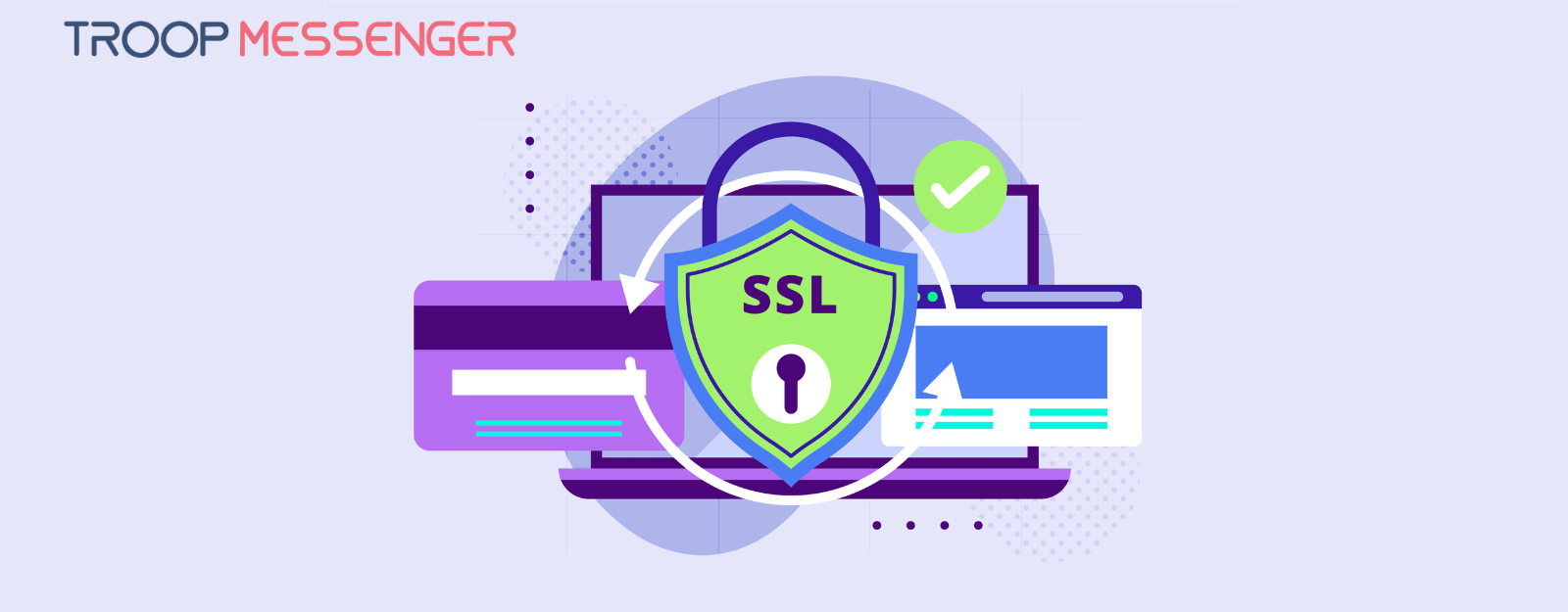Connect with us

Top 6 Benefits of AI and Machine Learning to Boost Efficiency in the Workplace
In an era marked by rapid technological advancements, Artificial Intelligence (AI) and Machine Learning (ML) stand out as monumental game-changers. These aren't just fleeting tech trends. They actually represent a major shift in how businesses operate today.
Rewind a few decades, and the business world was a realm dominated by manual processes, often leading to inefficiencies, delays, and human errors. Fast forward to today, according to Tidio’s research, more than 80% of employees agree that AI improves and boost productivity.
So, what are you waiting for? Read this article and dive deep into the multifaceted benefits of AI and ML to better understand their transformative potential and the pivotal role they play in modern workplaces.
Table of Contents
Key Benefits of AI and Machine Learning in the Workplace
We can agree that the advent of computers heralded a new age of efficiency, but the real quantum leap has been the integration of AI and ML. These technologies, with their ability to learn, predict, and automate, have revolutionized operations, making previously insurmountable challenges manageable and turning data into a goldmine of insights.
That’s why AI has made it possible to swiftly extract valuable insights from data, a task that previously demanded significant time and manual labor. This advancement unleashes the potential of employees to enhance customer service and make more informed business decisions.
But that’s not all. We’ve compiled a short list of benefits that help you boost your efficiency at work:
1. Automated Routine Tasks
Routine tasks, while essential, can often become monotonous and prone to human error. AI excels in automating these processes, ensuring unparalleled accuracy and consistency. By doing so, it not only saves invaluable time but also allows employees to redirect their focus to more strategic, creative endeavors, ultimately boosting morale and job satisfaction.
Here are some popular AI use cases that illustrate the benefits of automation:
- Customer support: Chatbots and virtual assistants can handle common customer inquiries, like tracking orders or providing product information, freeing up human agents to deal with more complex issues.
- Email management: AI algorithms can categorize and prioritize emails, filter out spam, and even draft routine responses. This helps professionals focus on critical emails and reduce the time spent on email management.
- Appointment scheduling: AI-driven scheduling tools can analyze participants' calendars and suggest optimal meeting times, eliminating the back-and-forth communication usually required to set up meetings.
What’s more, AI can foster a more collaborative work environment by streamlining communication and project management with the use of an advanced AI-enabled team communication tool, such as Troop Messenger. For example, through smart scheduling, language translation tools, translation services, and real-time data sharing, teams, whether in-house or remote, can work together seamlessly, breaking down geographical and time barriers.
2. Data-Driven Decision Making
In today's digital age, businesses are inundated with data. ML algorithms, with their ability to analyze and derive patterns from vast datasets, offer a beacon of clarity. This shift towards data-driven strategies ensures decisions are not just informed but are also proactive, anticipating market shifts and customer needs.
Additionally, AI applications that are capable of analyzing big data can:
- Isolate and highlight trends.
- Detect significant shifts in patterns.
- Generate comprehensive reports for companies to monitor their progress.
- Forecast the critical business metrics that require analysis for performance optimization.
When we talk about data and decision-making, AI combines these two aspects, allowing you to add personalization into this mix. And we all have to agree that in a market where customer preferences evolve rapidly, personalization is key.
AI aids in dissecting complex customer behavior patterns, ensuring tailored experiences that resonate. This heightened level of personalization fosters deeper customer connections, driving loyalty and ensuring businesses remain a step ahead of their competitors.
3. Improved Employee Training and Development
The modern workforce is diverse, with varying skills and learning curves. AI-driven tools can assess individual strengths and weaknesses, crafting personalized training modules. This targeted approach ensures employees are equipped with the necessary skills, fostering a culture of continuous learning and development.
For example, AI can serve as a continuous virtual instructor, accessible anytime, anywhere. This allows employees to pause and resume training at their convenience while also offering the capability to ask questions that will receive instant responses from an AI chatbot equipped with all training materials.
All in all, the main AI benefits for the learner at your workplace include:
- Customization: AI provides a tailored learning experience catering to individual needs and preferences.
- Accessibility: AI Accelerates information delivery by making learning content readily available through easily accessible global learning management systems.
- Connectivity: Tailors video content to establish a more intimate one-on-one connection between the learner and the material.
In the meantime, the main AI benefits for the person who’s conducting the training at your workplace are:
- Efficiency: AI Enhances learning speed and boosts completion rates.
- Personalized approach: AI offers personalized assessment methods, eliminating the necessity for traditional evaluation approaches.
- Inclusivity: AI translates training materials into multiple languages, ensuring global accessibility and expediting the learning process.
4. Proactive Maintenance and Issue Resolution
While consumer demand is rapidly expanding, artificial intelligence has also been evolving swiftly to handle the surge in data. According to a recent report by IBM, AI can reduce the volume of alerts by 50%, effectively minimizing the workload for IT team members who need to interpret them.
That said, operational hiccups, if not addressed promptly, can escalate into costly disruptions. AI's predictive maintenance capabilities, powered by customer satisfaction software, can foresee potential system vulnerabilities, allowing businesses to intervene early and ensuring seamless operations and customer satisfaction.
So, without a doubt, AI can assist IT teams in minimizing errors and addressing daily challenges through proactive approaches. Here are other examples:
- Predictive analytics: AI can analyze historical data and system performance to predict potential issues before they occur. For example, it can forecast when hardware components are likely to fail, enabling IT teams to replace them proactively and avoid unplanned downtime.
- Optimized resource allocation: AI algorithms can analyze resource utilization and recommend optimizations, such as redistributing workloads or scaling cloud resources based on demand patterns, to ensure efficient resource allocation.
- Security threat detection: AI can continuously monitor network traffic and detect unusual patterns indicative of security threats. It can then trigger alerts or initiate automated responses to mitigate potential breaches.
- Self-healing systems: AI can be integrated into IT infrastructure to enable self-healing capabilities. When an issue is identified, AI can automatically apply predefined solutions to resolve the problem without human intervention.
Additionally, instead of relying on specific team members to retain institutional and historical IT knowledge, such as having a subject matter expert track which automation runbooks resolve specific issues, AI can assume this responsibility and eliminate the need for manual processes in this department as well.
5. Enhanced Creativity and Innovation
Many agree that AI augments the productivity and effectiveness of employees within the workplace. However, there’s usually a more heated discussion regarding AI and creativity. Contrary to popular belief, AI doesn't stifle creativity; it amplifies it.
Here are some use cases illustrating how AI can boost creativity at work:
- Design assistance: AI-powered design tools can help graphic designers and artists by generating design suggestions, color palettes, or even entire layouts. Adobe's AI-enhanced features, like Adobe Sensei, can suggest image enhancements, layout adjustments, and font choices.
- Content management: AI-driven content generation tools, like ChatGPT, can assist writers, marketers, and content creators by generating drafts, ideas, or headlines. For example, an AI content generator can provide creative suggestions for ad campaigns, saving time and sparking new ideas.
- Collaborative brainstorming: AI can facilitate collaborative brainstorming sessions by suggesting ideas or solutions during team meetings. It can analyze the discussion and provide creative insights or alternative approaches.
- A/B testing: AI can analyze user behavior and suggest optimizations for websites, apps, or marketing campaigns. By continually refining strategies based on AI insights, businesses can creatively improve their digital presence and customer engagement.
All things considered, by offering insights into market trends, consumer preferences, and emerging technologies, AI serves as a catalyst for innovation, inspiring businesses to break the mold and pioneer novel solutions. And this is very important in order for companies to scale.
As businesses expand, diversify, or pivot to more creative areas, AI helps adapt, ensuring that the tools and insights at a company's disposal are always relevant. This adaptability ensures businesses remain agile, ready to seize new opportunities or navigate challenges.
6. Improved Security and Verification Systems
In an interconnected digital world, security is paramount. AI-powered security systems have transformed the landscape of surveillance and monitoring. AI-based video analytics excel in detecting objects and recognizing faces with exceptional precision. This heightened accuracy translates into more efficient real-time monitoring, empowering security personnel to respond promptly to potential security breaches.
AI-powered facial recognition technology has greatly improved access control systems by seamlessly identifying authorized personnel and visitors, enhancing the security of restricted areas. This technology not only provides convenience but also serves as a barrier against unauthorized access, effectively reducing the risk of security breaches.
So, it’s safe to say that AI-driven identity verification tools, from biometrics to behavioral patterns, ensure robust security protocols. These systems safeguard sensitive data, instilling trust among clients and stakeholders.
Additionally, AI-powered identity verification can enhance security for companies by:
- Quickly verifying identities in real-time, allowing companies to grant or deny access instantly, enhancing security in situations like login attempts or physical access control.
- ● Validating employee documents, such as passports or driver's licenses, by analyzing watermarks, security features, and fonts to detect forgeries or alterations.
- Enabling remote identity verification and making it possible for companies to verify identities without physical presence, which is crucial in the era of remote work and online services.
The transition to AI-centric security systems, while promising, comes with its set of challenges, especially when interfacing with the company’s internal systems. However, modern AI security solutions, designed with flexibility in mind, can integrate seamlessly. It's crucial to complement this integration with comprehensive staff training, ensuring they're empowered to leverage these tools to their fullest potential.
Final Thoughts
In the grand tapestry of technological evolution, AI and ML emerge as transformative threads, weaving a narrative of progress, efficiency, and innovation. For businesses, embracing these technologies is not a mere competitive strategy; it's a clarion call to evolve, innovate, and lead. In the words of a visionary, "The future belongs to those who see possibilities before they become obvious." In the realm of business, AI and ML are those possibilities waiting to be realized.








